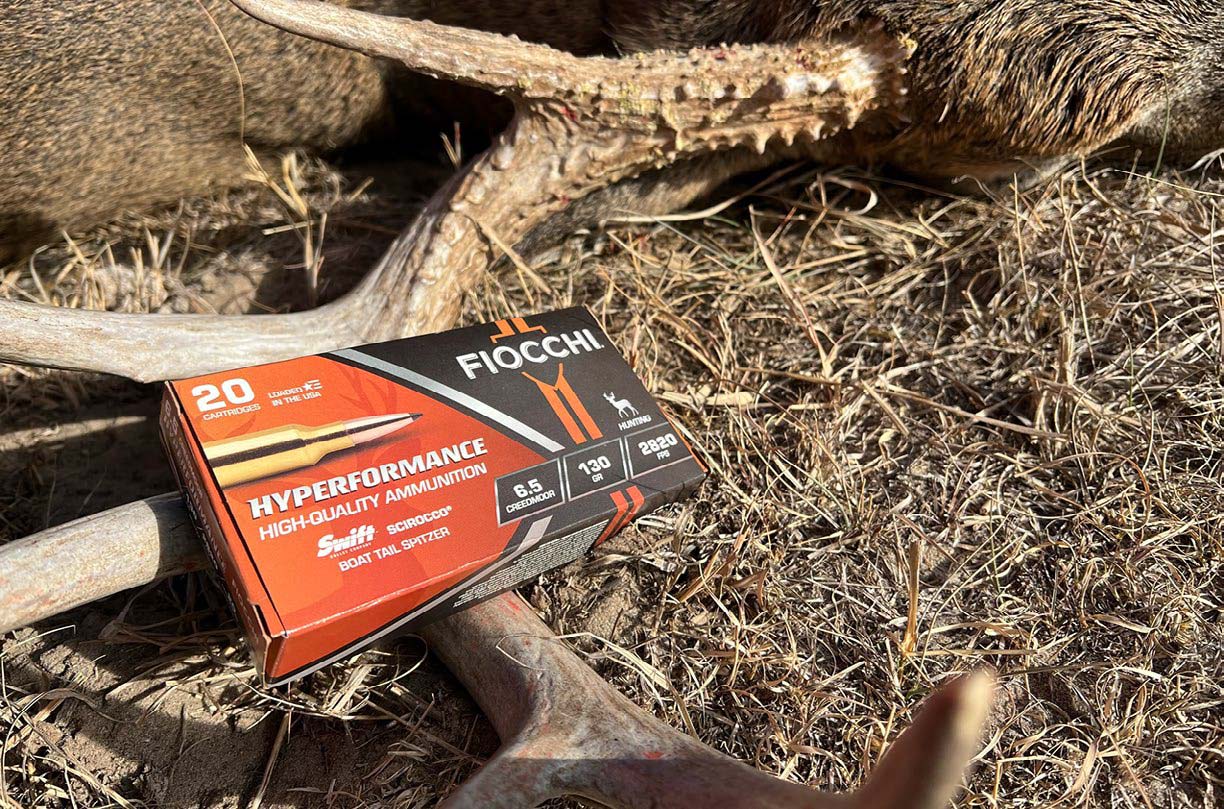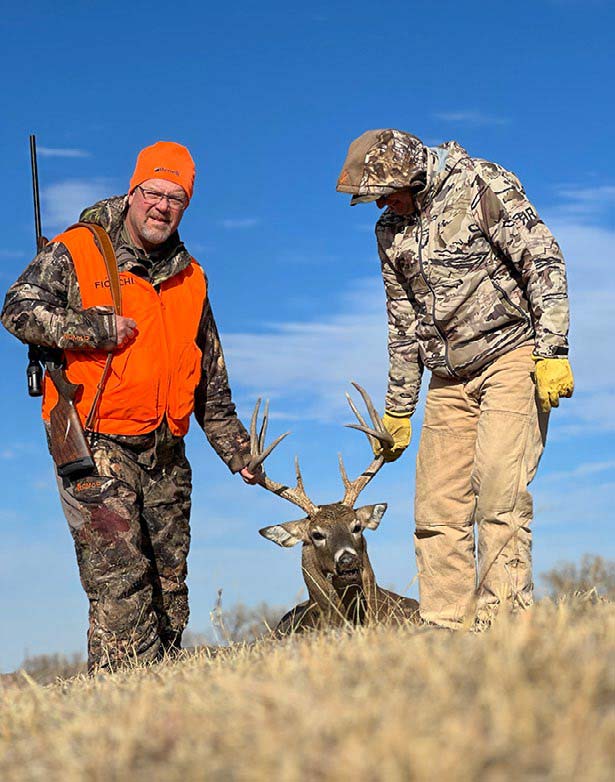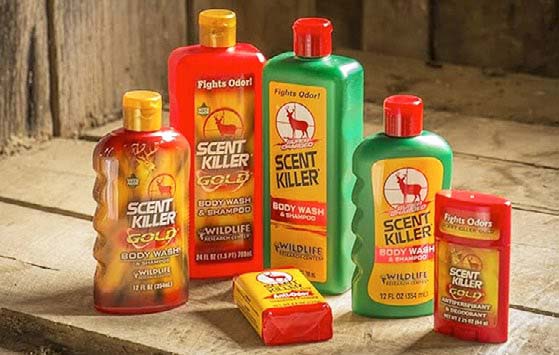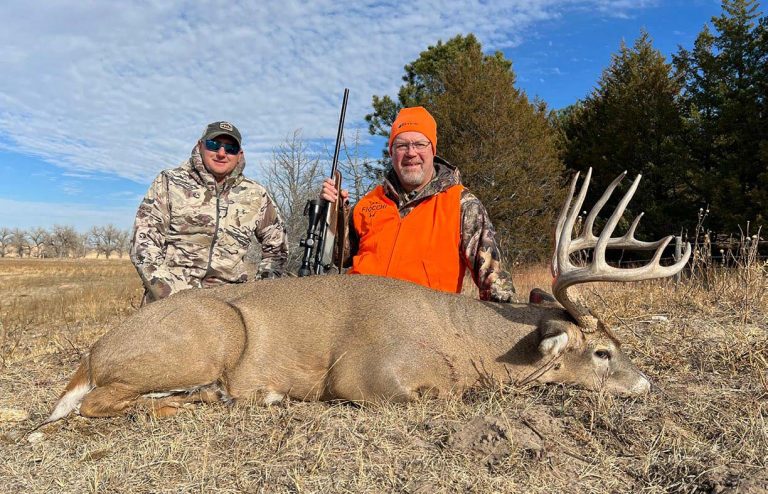The rolling Sandhills of Nebraska are vast and desolate, especially when the north wind blows hard with a bone-chilling cold. I was hunting with Scott Fink of Goose Creek Outfitters and had parked on a rise to glass a creek bottom. The brisk wind we were experiencing was welcome. It would get the deer moving. Does on the go would bring the big bucks out of the hills.
Scott grew up in the Sandhills and has an uncanny ability to spot deer at extreme ranges. We hadn’t been parked more than 30 seconds when he pointed to the far edge of the pasture and described where to look to see does moving along a fence half a mile away. The does were moving towards the dense cover of the creek bottom. Our timing was spectacular since a big buck jumped the fence and immediately checked the scent the does had left behind. Scott looked the buck’s antlers over carefully before exclaiming, “It’s a shooter.”
We watched the buck for 20 minutes as he chased does, covering the far side of the creek to ensure he knew the status of every lady in the herd. As the does started to trickle into cover, they quickly disappeared. Tall grass and cattails visually swallowed up the deer as they moved into the bedding area. On the other hand, the buck could not stay concealed, and we watched the white antlers bob up and down as he followed some high ground and eventually bedded near some willows.

OUR STRATEGY
Scott and I strategized about how to hunt the deer. There was no way to get into the creek, find the buck or get a shot in the heavy cover. The best bet was to set up on the far fence line and hope the deer would run the same trails as they went out to feed in late afternoon or evening. We felt safe leaving the deer to pack a lunch, get extra clothing and return to set up downwind of where we originally spotted the deer.
We returned quickly and could not see any deer in the creek bottom. Scott dropped me off to walk down the hills and set up with the wind in my face. The temperatures continued to drop, and I felt cold even though I had put on extra clothes. I located the game trails the deer had used and made sure I sat in cover to stay concealed and still see the main travel routes. I checked my sitting area for cactus and settled in for a long vigil.
A large flock of prairie chickens entertained me, flying from the creek where the deer had bedded. The birds fed in the riparian area of the waterway before bouncing up into the sandhills. The chickens made lots of noise and were a nice distraction while waiting for the deer to move. Geese flew over, heading farther south, and I started to shiver as the cold settled in. With about 20 minutes of legal shooting light remaining, a large doe trotted out of the creek and ran down the fence. A surge of adrenaline made me forget all about the cold. The doe jumped the fence and followed the trail as anticipated. I stayed on high alert until darkness set in, when I was forced to head back towards the truck. The buck did not show himself.
When I reached the truck, I couldn’t feel my fingers and the cold made my ears sting with the disapproval of the biting wind. Scott took one look at me and knew we needed to make a strategic change for the morning. The deer had been feeding in some seeded rye and a tower stand had been placed to watch the action. It was only 500 yards from where I sat in the open and it was a prime spot to catch the does and our big buck in the morning.

TAKE A STAND
Early the next morning, we rolled up to the stand in the dark, and I quickly tucked in and organized my gear. An industrial coating of frost engulfed the windows, making it impossible to see. I cracked the windows to view my surroundings, and the cold seeped in, making the blind a giant deep freeze. The sun rose in the east, creating a kaleidoscope of frost patterns on the plexiglass windows. The intricacy was beautiful, but it was not the view I had hoped for. The sun wasn’t fully over the horizon when a doe emerged from the creek and ran down the edge of the thick cover. Minutes later, a nice buck showed up hot on the trail with its nose guiding the way. The buck knew exactly where the doe traveled, and it retraced those steps with bloodhound accuracy.
When the buck caught up with the doe, the chase was on. He bulldogged the doe as she tried to evade the advances. The pair ran right towards the blind, jumped the fence and offered a prime opportunity. The buck sported four points on each side, and I opted to pass. After seeing the big buck the day before, I wanted to hold out for something bigger.

BEST-BET BLIND
The blind seemed like the best bet for finding the white-antlered buck we had seen, so I returned with a heater to ensure the windows would stay frost-free. I sat the evening and saw more does. I returned on the morning of day three. The heater was fired up early and the frost quickly dissolved from the window surface. I had been in the blind for about two hours when I saw Scott’s truck approaching me. He pulled up behind the blind and told me to pack my gear because he had spotted a big deer chasing other deer near the lodge. The buck had disappeared into a shelterbelt, and we would watch it until he stuck his nose out.
We were off with the anticipation of finding the rutting buck. Scott used the terrain, and we parked on a ridge about a mile from the tree lot. We worked the edges with our binoculars and spotting scopes. We had been watching for over an hour when we spotted deer moving inside the cedars. Three does filtered through, followed by several bucks. They were headed for the far side of the trees, so we made a move to see if they emerged. We drove to a spot where we could see the eastern edge and found the does bedded just inside the cover on the block’s northwest corner.
Scott and I used the terrain and a dugout mound to stalk within 150 yards. I belly crawled the last 20 yards until I could see the ears of one doe, then I laid prone to see if I could find the deer in my riflescope. Scott whispered that there were two bucks, and the biggest was above the bedded deer in the tree cover. The buck pushed a doe from her bed and scurried toward her with excited fervor. The pair stopped momentarily. I found the buck in my scope for a split second, but he moved before I could squeeze the trigger. My heart sank when the deer disappeared into the trees, leaving us not knowing where they were headed.
We stayed on the dugout berm. We were watching the remaining deer on the edge when the big buck and doe appeared on the west side of the trees, heading into the grassland. The doe tried to feed, but the buck pushed her farther into the open. The buck ended up in a shallow depression. I followed him with my crosshair until he stopped. I waited for the buck to make a turn and present its vitals and slowly engaged the trigger. At the rifle’s report, the buck jumped forward and tiptoed. I chambered a second round in my Lupo rifle and anchored the buck before he got back into the trees.
Scott and I scurried towards the buck. His antlers seemed to continue to grow as we closed the distance. Scott had trail camera photos of the deer from earlier in the year, but that buck had disappeared before hunting season and luckily returned for the rut.
It had been a wonderful hunt. Our changing strategies allowed us to finally zero in on a prime Sandhills buck. The rut often draws big deer that live in seclusion out of the hills, only to show up to continue the circle of life.
HERE IS THE LIST OF GEAR WE RELIED ON FOR THAT HUNT:
FIOCCHI HYPERFORMANCE HUNT
The American-made Fiocchi Hyperformance Hunt offers the accuracy and performance necessary for today’s demanding and advanced hunters. We shot 6.5 Creedmoor with devastating results on big-bodied Whitetails. There are bullet and caliber options offering exceptional weight retention and excellent expansion.
Fiocchi offers a complete lineup of big game cartridges, handguns, competition, shotshells and defense loads to cover any needs.

BENELLI LUPO
This Italian-made, bolt-action rifle is feature-rich, and it has seven exclusive Benelli patents. I noticed the rifle has a fit, feel and balance that make it intuitive to the shoulder and immediately able to find the crosshair in the optic. The Lupo features a chassis-style construction, a progressive comfort recoil-reducing system and a Combtech cheek pad. The Crio-treated, free-floating barrel is the base for consistent accuracy in combination with a crisp and adjustable trigger. The rifle design offers modular adjustability for a perfect fit for any shooter. It has 12 drop-and-cast positions, including shims and length-of-pull spacers. The fine-tuning options make the rifle feel like it was custom-made for any shooter.
The ergonomics of the Lupo stand out. The rifle is easy to load. With no muzzle jump, the recoil feels tamed. The wood stock is highly figured but also available with a synthetic model. One of the most unique features is the BE.S.T. technology for surface treatment, ensuring durability and imperviousness to any weather conditions. It is not a coating but a process that protects the chassis and rifle at the molecular level. It is available in all popular calibers.
STEINER PREDATOR 8 RIFLESCOPE
The 2-16 X 42 Predator 8 has a 30 mm tube for increased elevation and windage adjustments. It is the lightest and most compact in the Steiner lineup. The 8x system offers fast target acquisition to long-range shooting options. The rear focal plane E3 Ballistic reticle with adjustable turrets means no more holdovers. An easy-to-use zero reset makes setting for changing conditions or shot opportunities simple. The glass offers a wide field of view with high-contrast coatings for a crisp, clear image and outstanding target detail. The illuminated reticle has 11 brightness settings.

ALPS CROSSBUCK DAYPACK
The ALPS Crossbuck is the perfect size pack for a day in the field. It has the right number of gear storage compartments and compression straps to keep things secure and quiet. It comes in blaze orange for deer hunters and is best described as a high-quality pack that would break your budget. The material is quiet and there are 34 liters of space to ensure you have licenses, knives and rations to make it all day.

WILDLIFE RESEARCH CENTER SCENT KILLER GOLD
Before the deer season gets underway, I start a routine of showering with Scent Killer Gold Body Wash and Shampoo and doing my laundry with the odor-killer detergent. I spray my clothes daily with Scent Killer Gold Spray and use the Field Wipes after handling food. Maintaining the routine has given me the edge when hunting big deer. The routine is important for success and fights odor at the molecular level.

Per our affiliate disclosure, we may earn revenue from the products available on this page. To learn more about how we test gear, click here.



